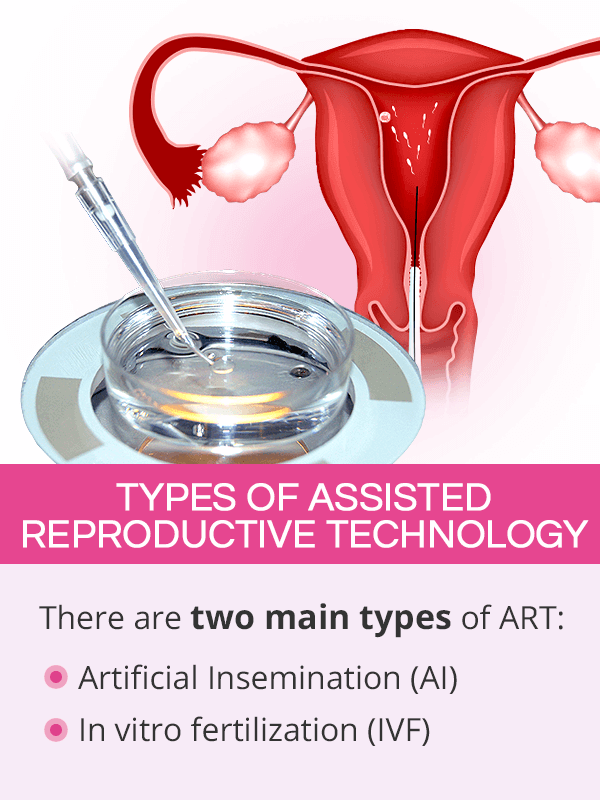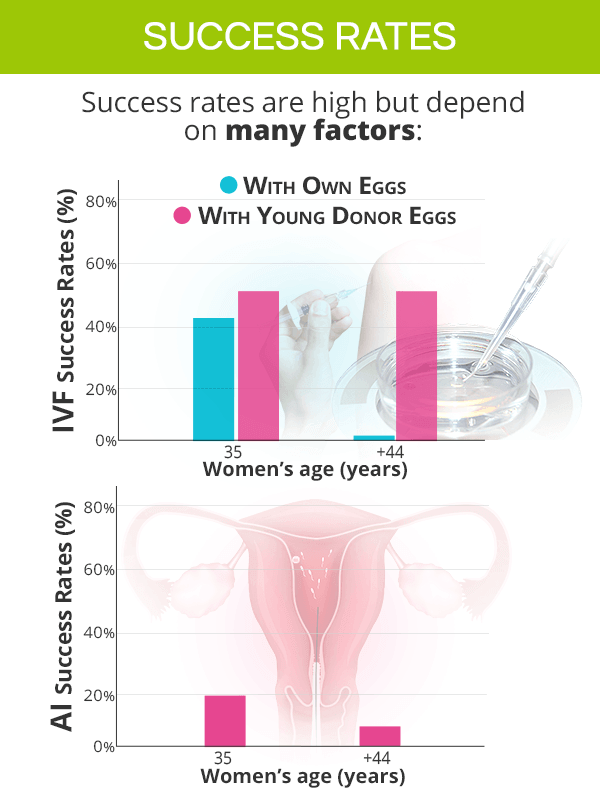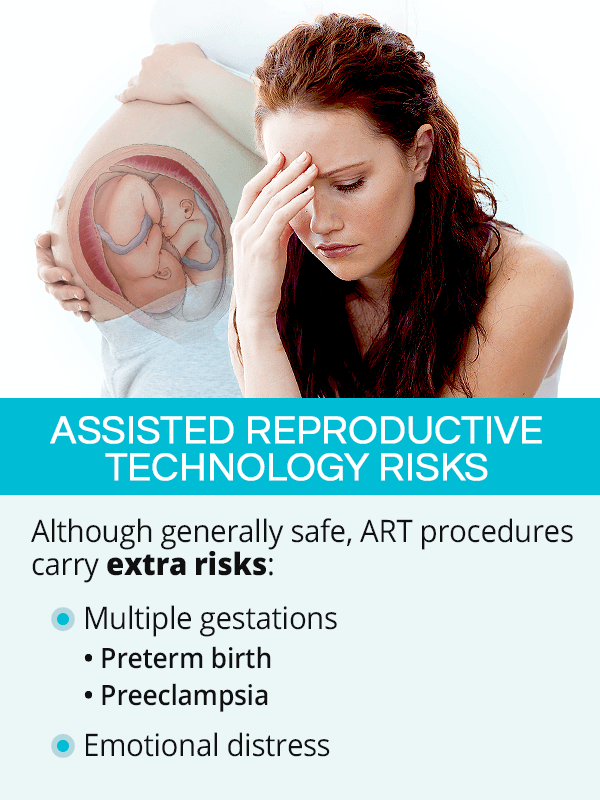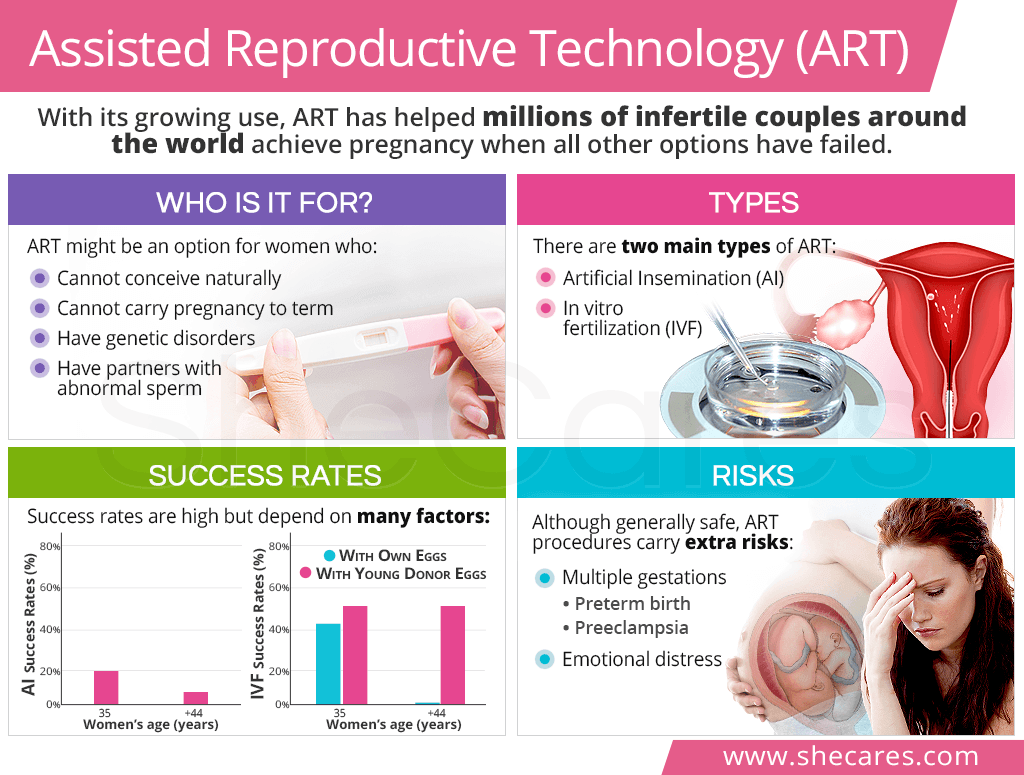What are Assisted Reproductive Technologies?
ARTs, also called advanced or artificial reproductive technologies, refer to medical techniques and procedures to help people achieve pregnancy when natural conception is not feasible. As such, ARTs are a part of treatments for infertility.
Who Can Benefit from ART?
Women with the following reproductive difficulties might benefit from achieving pregnancy via ARTs:
Those who cannot conceive naturally
Those who can conceive but have difficulty carrying pregnancy
Those who have or are carriers of a genetic disorder along with their partners
Those whose partners have sperm abnormalities
Types of Assisted Reproductive Technology

There are two major types of ARTs, artificial insemination and in vitro fertilization, although some sources do not include artificial insemination in their classifications. Nevertheless, ART types include the following procedures:
Artificial Insemination (AI). It is typically the first ART procedure recommended to women trying to conceive, especially those who despite no tubal blockage fail to get pregnant or those whose partners have sperm abnormalities that prevent conception. AI consists of placing the sperm in a woman's reproductive tract, most commonly in the uterus (a procedure called intrauterine insemination).
In Vitro Fertilization (IVF). Most effective of all ARTs, IVF often follows AI after six failed cycles, especially in the case of tubal blockage, advanced endometriosis, or male infertility. It consists of harvesting eggs from the ovaries and fertilizing them in a dish outside of a woman's body before transferring them to the uterus for implantation. They can also first undergo an intracystoplasmic sperm injection (ICSI) before being transferred.
Gamete Intrafallopian Transfer (GIFT) and Zygote Intrafallopian Transfer (ZIFT) are two alternative ART versions of IVF, during which the fertilized eggs are placed in the fallopian tubes much sooner. Although successful, IVF is the preferred type of ART with GIFT and ZIFT constituting only about 2% of all cases.
Other Procedures Involved with ARTs
Assisted reproductive technologies are also an integral part of other reproductive techniques, such as:
Egg or Embryo Donation. When a woman does not have ovarian eggs or those she has are of poor quality, she can use eggs from a younger donor to get pregnant. It is also possible to use donor embryos, which are donor eggs fertilized with donor sperm.
Surrogates and Gestational Carriers. Having a child through a surrogate (a woman who carries a child that was conceived with the couple's male partner's sperm but her own eggs) or a gestational carrier (a woman carries a child conceived with the couple's eggs and sperm) is an option for those women who cannot carry pregnancy to term.
Pre-implantation Genetic Diagnosis (PGD). This screening is a part of IVF and allows for detection of genetic disorders in the embryos before implanting them in the uterus.
Assisted Reproductive Technology Success Rates

Although artificial reproductive technologies are considered some of the most effective ways to help women achieve pregnancy, specific ART success rates depend on numerous factors.
ART Success Rates for IVF
The success of IVF depends on a woman's age and the state of her ovarian reserve:
Women under 35 using their own eggs have a 41-43% rate of live births. By the time they reach the age of 44 and above, that rate decreases to 1%.
Women using eggs from a younger donor have a steady 48-51% rate no matter their age at the time of IVF.
ART Success Rates for AI
The success rates of AI depend on multiple factors, such as maternal and paternal age, ovarian reserve, sperm quality, and the type of AI as well as whether ovarian stimulation has been performed:
Couples undergoing IUI (or intrauterine insemination, when sperm is deposited in the uterus) have the highest chances of conception, about 15-20% per cycle. Those who undergo less popular intracervical insemination (ICI), during which sperm is placed in the cervix, have 10-15% success rates per cycle.
Studies have shown that up to 70% of couples conceive with IUI within the first six cycles.
Because GIFT and ZIFT are not common ART procedures, accurate and up-to-date success rates are difficult to be obtained.
Assisted Reproductive Technology Risks

The various advanced reproductive technologies are generally rendered safe for both the mother and the baby; however, they do carry additional risks with the following being the most common ones:
Multiple Gestations
It is estimated that more than 40% of all ART-conceived pregnancies are twin pregnancies. Carrying multiple children comes with a significantly higher risk of pregnancy complications, including a higher likelihood of premature birth, preeclampsia, miscarriage, and gestational diabetes.
Emotional Distress
Undergoing ARTs, especially IVF, is known to be emotionally draining, particularly because most women require several cycles to achieve pregnancy. As such, prolonged stress, depression, and anxiety might be common during infertility treatments with ARTs. High financial costs are another burden often adding to emotional distress.
Key Takeaways
Highly popular and effective, ARTs come in two main types: AI and IVF. Although the specific choice of a procedure hugely depends on maternal health and infertility cause, among other factors, most couples are advised to start with the least invasive and easier approach, which is artificial insemination. About 70% do successfully get pregnant after six insemination cycles, while those who do not typically proceed to do in vitro fertilization. The rates of success with IVF using one's own eggs drastically drops after 35; whereas, the rates when using a young donor's eggs remain steady across all age groups. Although generally considered safe, assisted reproductive technology carries some risks, such as multiple gestations or emotional burden. Nevertheless, ARTs have enabled millions of couples around the world to become parents after all other infertility treatments have failed to bring desired results.
Sources
- An International Journal of Obstetrics and Gynaecology. (2018). Short- and long-term outcomes in children born after assisted reproductive technology. Retrieved March 3, 2019 from https://obgyn.onlinelibrary.wiley.com/doi/pdf/10.1111/1471-0528.15437
- CDC. (2019). ART Success Rates. Retrieved March 3, 2019 from https://www.cdc.gov/art/artdata/index.html
- EMBO reports. (2013). The health risks of ART. Retrieved March 3, 2019 from https://www.ncbi.nlm.nih.gov/pmc/articles/PMC3566846/
- Human Reproduction. (2003). Risks and complications in assisted reproduction techniques: Report of an ESHRE consensus meeting. Retrieved March 3, 2019 from https://academic.oup.com/humrep/article/18/2/455/639231
- Reproductive Medicine and Biology. (2013). What are the risks of the assisted reproductive technologies (ART) and how can they be minimized? Retrieved March 3, 2019 from https://www.ncbi.nlm.nih.gov/pmc/articles/PMC5904622/
- Society For Assisted Reproductive Technology. (n.d.). Assisted Reproductive Technologies. Retrieved March 3, 2019 from https://www.sart.org/patients/a-patients-guide-to-assisted-reproductive-technology/general-information/assisted-reproductive-technologies/
- UT Southwestern Medical Center. (2017). Part Two: Assisted reproductive technologies and fetal risk. Retrieved March 3, 2019 from https://utswmed.org/medblog/part-two-art-risk/
- Victorian Assisted Reproductive Treatment Authority. (n.d.). What is ART? Retrieved March 3, 2019 from https://www.varta.org.au/sites/default/files/What%20is%20assisted%20reproductive%20treatment%20(ART)%20-%20brochure.pdf
